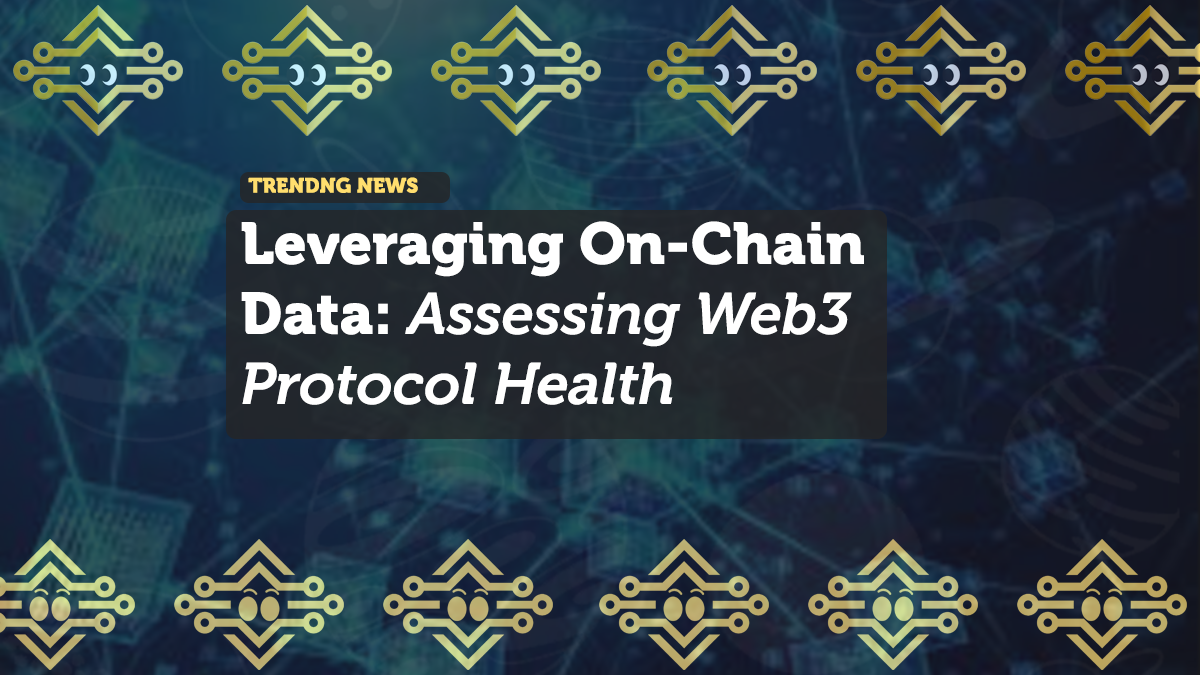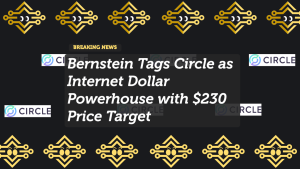
Leveraging On-Chain Data: Assessing Web3 Protocol Health
The rise of Web3 has brought with it an unprecedented level of transparency and accessibility through on-chain data. By harnessing this data, investors, developers, and the community can better understand the health and performance of decentralized protocols. In this guide, we explore the tools, metrics, and methods for assessing Web3 projects and their significance in driving informed decisions.
Why On-Chain Data Matters
1. Transparency
Blockchain’s public nature enables anyone to verify transactions, monitor wallet activity, and analyze network health. This transparency fosters trust and accountability across decentralized ecosystems.
2. Real-Time Insights
Unlike traditional financial systems that rely on delayed reporting, on-chain data provides instant insights into user activity, fund flows, and protocol performance. This enables agile decision-making for investors and developers alike.
3. Validation of Claims
Many Web3 projects tout high adoption rates or token utility. On-chain data cuts through the hype, offering hard evidence of whether claims like these hold true.
4. Risk Assessment
Patterns in liquidity pools, transaction frequency, and token distribution provide early warnings about potential risks like centralization, smart contract vulnerabilities, or market instability.
Tools for On-Chain Analysis
To harness the power of on-chain data, a suite of analytical tools has emerged:
1. Dune Analytics
- Features: Customizable dashboards, SQL-based queries, and community-driven insights.
- Use Case: Track user growth, token movements, and protocol adoption trends.
- Example: A dashboard showing the growth of decentralized exchanges (DEXs) by transaction volume.
2. Nansen
- Features: Whale tracking, fund flow analysis, and wallet tagging.
- Use Case: Monitor large token movements to understand market sentiment.
- Example: Identifying when a whale accumulates tokens in a promising DeFi project.
3. Glassnode
- Features: On-chain metrics for Bitcoin, Ethereum, and altcoins, including network activity and investor behavior.
- Use Case: Evaluate market trends and long-term holder activity.
- Example: Analyzing Bitcoin’s dormancy flow to predict price movements.
4. Chainalysis
- Features: Transaction tracing, regulatory compliance, and network mapping.
- Use Case: Understand ecosystem growth and identify potential risks in token distribution.
- Example: Tracking the distribution of wrapped Bitcoin (WBTC) across DeFi platforms.
Key Metrics for Web3 Protocol Health
Analyzing on-chain data involves diving into metrics that reveal a protocol’s utility, security, and adoption:
1. Total Value Locked (TVL)
TVL measures the amount of capital locked within a protocol, serving as a proxy for trust and adoption. For example, the growth of TVL in platforms like Aave and Uniswap signals increasing user confidence.
2. Transaction Volume
High transaction volume reflects active user participation. For instance, an uptick in Ethereum transactions during an NFT boom indicates a thriving ecosystem.
3. Unique Addresses
The number of unique wallet addresses interacting with a protocol signifies user growth and decentralization.
4. Token Distribution
Concentrated token holdings among a few wallets can signal risks of manipulation or centralization. Projects with balanced distribution tend to be more resilient and decentralized.
5. Smart Contract Usage
Metrics tracking the frequency and type of smart contract calls reveal which features of a protocol are being actively used, helping to gauge real-world utility.
How On-Chain Data Informs Investment Decisions
1. Identifying Trends
Observing increases in TVL, user activity, or whale accumulation can signal early opportunities in up-and-coming protocols.
2. Mitigating Risks
Spotting uneven token distribution or unusual transaction patterns helps investors steer clear of risky projects or potential rug pulls.
3. Comparing Performance
On-chain data allows investors to compare multiple protocols. For instance, analyzing yield rates, liquidity depth, and retention metrics across lending platforms like Compound and Aave.
Community Engagement: Share Your Approach
We’d love to hear from you:
- What on-chain tools do you rely on, and why?
- Have you discovered any unique metrics that give you an edge?
- How has on-chain data influenced your investment or project participation?
The Role of Transparency in Web3’s Future
Fostering Trust
By enabling public access to transaction data, on-chain metrics build trust between users and protocols, essential for scaling decentralized ecosystems.
Driving Innovation
Open access to blockchain data encourages developers to create new tools and analytical models, pushing the boundaries of what’s possible in DeFi and beyond.
Regulatory Compliance
Transparent data allows protocols to meet AML (Anti-Money Laundering) and other regulatory requirements, helping bridge the gap between Web3 and traditional finance.
Empowering Governance
For DAOs, on-chain data ensures informed decision-making, enabling community members to vote based on metrics like project revenue or user growth.
Resources for On-Chain Analysis
Learn the Basics
- “Mastering Blockchain Analytics” by Nansen Academy.
- “Crypto Data Demystified” webinar series by Glassnode.
Explore Real-Time Data
- Dune Analytics Dashboards: Join the community to explore pre-built dashboards.
- Messari Reports: For insights into token performance and adoption.
Engage with Communities
- r/OnChainData on Reddit: Share your analysis and learn from others.
- Discord Groups: Many analytics platforms have active communities for discussions.
Conclusion
On-chain data is revolutionizing how we assess the health and potential of Web3 protocols. From tools like Dune Analytics and Nansen to key metrics like TVL and token distribution, these insights enable smarter decisions in a rapidly evolving ecosystem.
Whether you’re an investor, developer, or enthusiast, leveraging on-chain data ensures you’re always one step ahead.
So, which on-chain tools will you explore next? Let us know in the comments below!
For the latest updates and analysis, follow CryptoLiveLeak.org, your trusted source for blockchain insights.
















